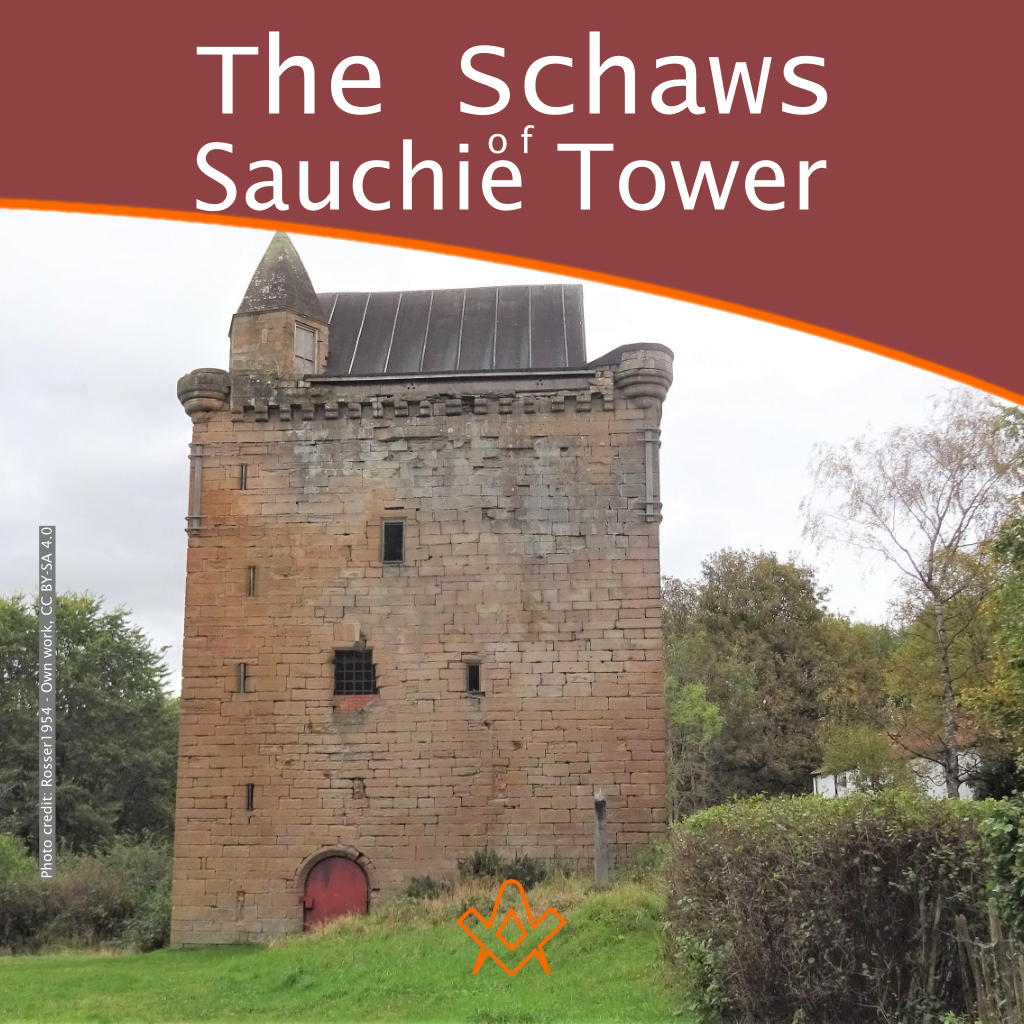Most Freemasons in Scotland, and indeed around the world, are familiar with William Schaw, considered by many to be the “father” of Scottish Freemasonry, perhaps Freemasonry in general.
In 1598 and 1599, Schaw penned and published his Regulations for the Governance of the Craft, which became known as the First and Second ‘Schaw Statutes’ which had a profound and defining effect on Operative Masonry in Scotland.
He was more generally an important figure in Scottish society, and a member of the Royal Court in Scotland; so much so in fact, that following his death he was buried in Dunfermline Abbey under a tomb erected in his memory by his great friend Alexander Seton.
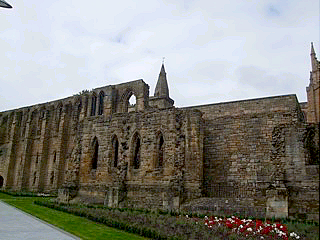
Dunfermline Abbey
IMAGE CREDIT: Kenneth Jack
He was held in such affectionate regard that a report on his passing read:
DEATH OF WILLIAM SCHAW, “Master of the Works.”—William Schaw, architect to King James VI., died on the 18th of April, this year.
He was an accomplished man, and “held in the highest esteem by his Sovereign and by all who was honoured with his friendship.”
About the year 1594, the restoration of the Abbey, &c., was committed to his charge.
He built the steeple and the north porch, some of the buttresses, the roofs of the north and south aisles, and that part of the west gable immediately above the great western door.
He also planned and built the “Queen’s House,” the Bailie and Constabulary Houses, &c.
He died at Dunfermline, on the 18th April, 1602, after a short illness, and was interred in the north aisle of the nave which he had restored.
His monument, a very massive one, was reared about his grave, “behind the pulpit-pillar”. [1]
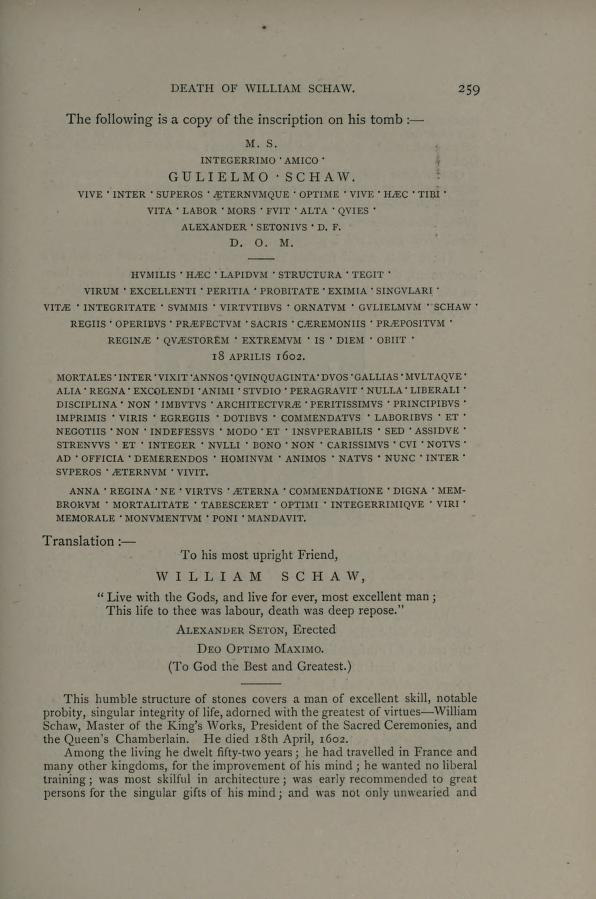
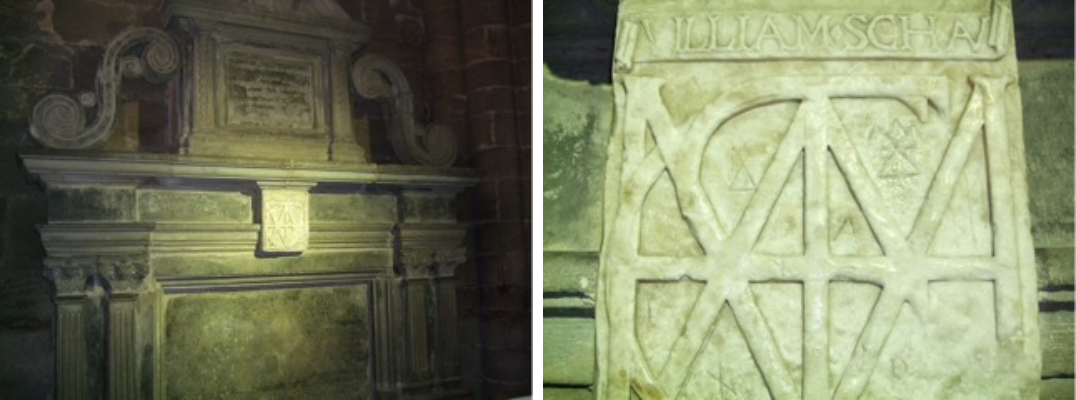
left: William Schaw’s tomb, Dunfermline Abbey
Right: Close up of Schaw’s tomb at Dunfermline Abbey showing various Mason Marks.
IMAGE CREDIT: Kenneth Jack
The tomb was moved once to its present location and the Latin inscription on it reads in English:
To his most upright Friend,
WILLIAM SCHAW,
“Live with the Gods, and live for ever, most excellent man;
This life to thee was labour, death was deep repose.”
ALEXANDER SETON, Erected
DEO OPTIMO MAXIMO
(To God, the Best and Greatest.)This humble structure of stones covers a man of excellent skill, notable
Probity, singular integrity of life, adorned with the greatest of virtues—William Schaw, Master of the King’s Works, President of the Sacred Ceremonies, and The Queen’s Chamberlain. He died 18th April, 1602.Among the living, he dwelt fifty-two years; he had travelled in France and
many other kingdoms, for the improvement of his mind; he wanted no liberal
training; was most skilful in architecture; was early recommended to great
persons for the singular gifts of his mind; and was not only unwearied and
Indefatigable in labours and business, but constantly active and vigorous, and
was most dear to every good man who knew him. He was born to do good
offices, and thereby to gain the hearts of men; now he lives eternally with
God.Queen Anne ordered this monument to be erected to the memory of this
most excellent and most upright man, lest his virtues, worthy of eternal commendation, should pass away with the death of his body”. [2]
William Schaw was related to the ‘Schaws of Sauchie’ whose family seat was near Stirling.
They were a very powerful and influential medieval family and many of them, like William, moved easily amongst Royalty.
In 1341, King Robert the Bruce granted the lands of Sauchie in present-day Clackmannanshire to Henri De Annand, the Sheriff of Clackmannan.
Sometime prior to 1415, the precise date cannot be determined – Henri’s descendent Mary De Annand married Sir James Schaw of Greenock, and in one fell swoop James became joint proprietor, with his new wife, of the Sauchie estate.
Shortly after the marriage, possibly between 1415 and 1420, Sir James built Sauchie Tower.
From then, Sauchie Tower became the Schaw family seat, and the ancient structure still stands in a proud though ruinous state today.
As a result of his marriage James assumed the title of Sir James Schaw of Sauchie. James and Mary’s second son John became Sir John Schaw of nearby Broich, and he was reputedly the father of Scotland’s “Father of Freemasonry,” William Schaw.
In an appointment from the king on 20 January, 1489, Sir John and his father Sir James became joint guardians of Stirling Castle, and in addition to this, Sir John was Sheriff of Clackmannan.
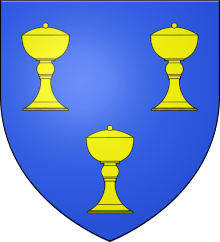
Coat of arms of the Schaws of Sauchie
By Celtus (Celtus @ english wikipedia) – Created by myself using the following svg file. This vector image includes elements that have been taken or adapted from this file: Pedrafita do Cebreiro Coat of Arms.svg (by SanchoPanzaXXI)., CC BY-SA 3.0
IMAGE LINKED: wikimedia Attribution 4.0 International (CC BY 4.0)
In 1529, an Alexander Schaw was granted the hereditary title of ‘Master of the King’s Wine Cellar.’
This entitled the Schaw family to use the depiction of three covered golden cups on their coat of arms in recognition of this honour.
The same honour was bestowed on Alexander’s grandson some years later. The latter may have been the Alexander Schaw who became heir to Sauchie estate in 1623, more about him shortly.
There are no extant documents which actually confirm William Schaw’s ancestry, and many historians over the years appear to have based the assertion that William Schaw was a member of the Schaw family of Sauchie on the fact he used this coat of arms himself.
This is a reasonable assumption to make, but there is certainly scope for investigating William Schaw’s background more extensively.
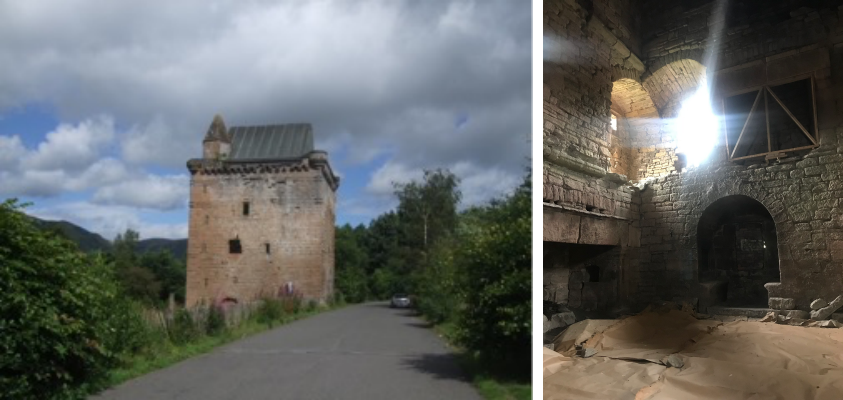
left: Sauchie Tower
IMAGE CREDIT: Kenneth Jack
Right: The ‘Great Hall’ – interior of Sauchie Tower.
IMAGE CREDIT: Tartanqueen21, CC BY-SA 4.0
Sauchie Tower is built of pink-sandstone ashlar blocks, pinned with oyster shells. It measures 11.5 metres by 10.3 metres externally with walls approximately 2 metres thick; with the exception of the west wall which is more then 3 metres thick.
The building consists of six storeys, with mural chambers on the first three levels. It has a very plain exterior, but the inside is more elaborate, containing ornate fireplaces and window recesses.
There is also a courtyard, and outer (curtain) walls on at least two sides. The lower floors of the tower were used for storage.
Above the lower floors was the ‘Great Hall’, and elsewhere within the building were various bed chambers.
Access to the various storeys was by way of a ‘turnpike stairway’ which is “capped on the parapet walk by an unusual hexagonal cap-house with a pyramidal roof”.
By 1631, living in towers became unfashionable and as noted earlier, Alexander Schaw, owner of the estate since 1623, built a new house next to the tower which he named ‘Old Sauchie House’.
On erecting this house, the builders appear to have utilised the west courtyard wall of the tower, and part of a medieval west range as a ground floor.
Alexander Schaw, the man behind this enterprise was knighted in 1633 by Charles I during his tour of Scotland.
‘Old Sauchie House’ thereafter became the main residence of the Schaw family in the 17thcentury.
The Tower retained some utility however, and continued to be used by the family for important social functions and for storage.
The second and third storeys no longer survive, believed to have succumbed to the ravages of a fire which gutted the tower in the 1750s.
Having died in 1602, William Schaw would have had no connection with the latter house, but he undoubtedly would have stayed for periods at the tower, and although there is no record extant of it that this writer is aware of, he might well have contributed to improvements to the tower during his lifetime.
By the 1980s, Sauchie tower was in private ownership and although it was hoped that some restoration would take place, nothing came of it, and ownership eventually passed to Clackmannanshire Council.
The tower is presently owned by the Clackmannanshire Heritage Trust and restoration work commenced in 1999 to restore the ruined shell, and prevent further deterioration.
The work consisted of restoration of the parapet walk, and the provision of a new timber roof. The roof was given a temporary covering of felt in order to dry out the walls previous to further restoration.
The Friends of Sauchie Tower are a community group formed in 2002 to support the restoration work to the tower building, and in 2004 the group received Heritage Lottery funding to finance a project entitled Sauchie Tower and its Environs.
The main aims of this project are to:
- Raise Awareness of The Tower & Its Environment
- Increase Community Understanding & Knowledge of The Area
- Encourage People to Protect the Tower, Support Its Preservation, And Enjoy the Restored Site. [3]
Some minor excavation of the site was carried out in the 1980s and in 1999, and these revealed details of its design and uses.
A more detailed excavation in 2005 revealed much more, owing to the efforts of a small team of dedicated volunteers and professional archaeologists.
At that time part of a cobbled courtyard was found along with the remains of a large hall, with a kitchen and a huge fireplace at the east end of the site; thought to have been built by the Schaw family as they become more prominent and important, in order to entertain their equally important guests on a grander scale than the limited space within the tower would allow.
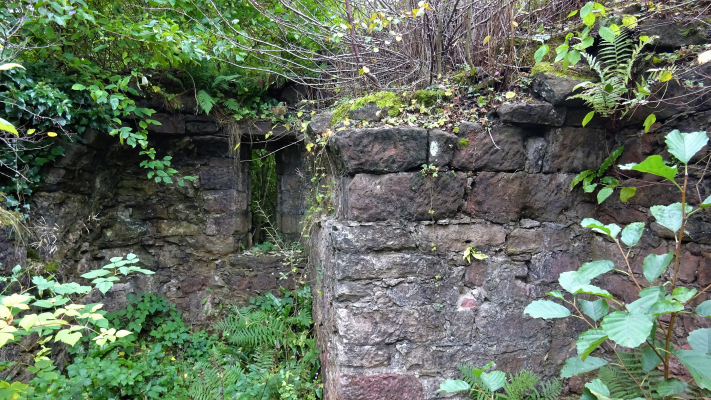
Old Sauchie House ruins.
IMAGE CREDIT: Rosser1954, CC BY-SA 4.0,
To the east of the kitchen they found a circular bread-oven and walls of further 18th and 19th century buildings situated to the north of the tower.
They also found a small ditch outside the west courtyard wall, which had been partly remodelled around 1490 to incorporate gun-holes which were a new innovation at that time (a few years before Columbus sailed the ocean blue, just to give some context to the antiquity of the site) and a semi-circular corner tower, which was later incorporated into ‘Old Sauchie House’.
Some success was also achieved in excavating the latter property, where part of a barrel-vaulted, northern-most room was excavated. This room incorporated a late medieval corner tower of the courtyard wall. Wall plaster dating from around 1631 was found, along with evidence of a large fireplace in an east wall.
When this writer visited the site in the village of Fishcross near Alloa in July 2010, there was little evidence of work being carried out; but it is to be hoped that the project will continue apace to restore this ancient building to something approaching its former glory.
Every Freemason will wish the staunch band of volunteers and professionals every success in their endeavours to restore what appears to be the ancestral pile of one of the most important and illustrious figures in Scottish Masonic history.
Footnotes
References
Notes:
[1] Henderson, Ebenezer. The annals of Dunfermline and vicinity, from the earliest authentic period to the present time, A.D. 1069-1878; interspersed with explanatory notes, memorabilia, and numerous illustrative engravings. J. Tweed, Glasgow, 1879. p.259.
[2] Ibid. p. 260.
[3] Clackmannanshire Council Website: https://www.clacks.gov.uk/visiting/sauchietower/
Article by: Kenneth C. Jack
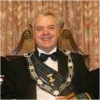
Kenneth C. Jack FPS is an enthusiastic Masonic researcher/writer from Highland Perthshire in Scotland.
He is Past Master of a Craft Lodge, Past First Principal of a Royal Arch Chapter, Past Most-Wise Sovereign of a Sovereign Chapter of Princes Rose Croix.
He has been extensively published in various Masonic periodicals throughout the world including: The Ashlar, The Square, The Scottish Rite Journal, Masonic Magazine, Philalethes Journal, and the annual transactions of various Masonic bodies.
Kenneth is a Fellow of the Philalethes Society, a highly prestigious Masonic research body based in the USA.
Recent Articles: Kenneth C. Jack
 Observations on the History of Masonic Research Archaeology is often associated with uncovering ancient tombs and fossilized remains, but it goes beyond that. In a Masonic context, archaeology can be used to study and analyze the material culture of Freemasonry, providing insight into its history and development. This article will explore the emergence and evolution of Masonic research, shedding light on the challenges faced by this ancient society in the modern world. |
 Anthony O'Neal Haye – Freemason, Poet, Author and Magus Discover the untold story of Anthony O’Neal Haye, a revered Scottish Freemason and Poet Laureate of Lodge Canongate Kilwinning No. 2 in Edinburgh. Beyond his Masonic achievements, Haye was a prolific author, delving deep into the history of the Knights Templar and leaving an indelible mark on Scottish Freemasonry. Dive into the life of a man who, despite his humble beginnings, rose to prominence in both Masonic and literary circles, leaving a legacy that continues to inspire. |
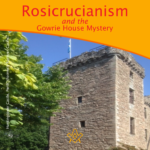 Rosicrucianism and the Gowrie House Mystery Unearth the mystifying intersections of Rosicrucianism and the infamous Gowrie House Mystery. Dive into speculative claims of sacred knowledge, royal theft, and a Masonic conspiracy, harking back to a fateful day in 1600. As we delve into this enthralling enigma, we challenge everything you thought you knew about this historical thriller. A paper by Kenneth Jack |
 Thomas Telford's Masonic Bridge of Dunkeld Of course, there is no such thing as a ‘Masonic Bridge’; but if any bridge is deserving of such an epithet, then the Bridge of Dunkeld is surely it. Designed by Scotsman Thomas Telford, one of the most famous Freemasons in history. |
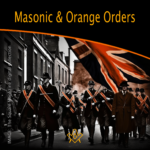 The masonic and orange orders: fraternal twins or public misperception? “Who’s the Mason in the black?” |
 Kenneth Jack's research reveals James Murray, 2nd Duke of Atholl – the 'lost Grand Master' |
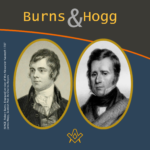 An Oration delivered to the Annual Burns and Hogg Festival, at Lodge Canongate Kilwinning, No. 2, Edinburgh, on 24 January 2018. By Bro. Kenneth C. Jack, FSAScot FPS, Past Master, Lodge St. Andrew, No. 814, Pitlochry. |
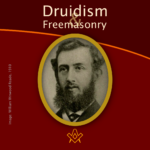 William Winwood Reade was a Scottish philosopher, historian, anthropologist, and explorer born in Crieff, Perthshire, Scotland. The following article by Kenneth Jack, provides some hints that William may have been a Freemason, but there is presently no definitive evidence he was. |
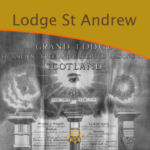 What's in a name? A brief history of the first Scottish Lodge in Australia - By Brother Kenneth C. Jack, Past Master, Lodge St. Andrew, No. 814, Pitlochry |
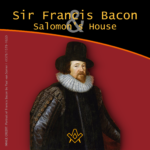 Sir Francis Bacon and Salomon’s House Does Sir Francis Bacon's book "The New Atlantis" indicate that he was a Rosicrucian, and most likely a Freemason too? Article by Kenneth Jack |
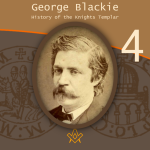 George Blackie – The History of the Knights Templar P.4 The final part in the serialisation of George Blackie's 'History of the Knights Templar and the Sublime Teachings of the Order' transcribed by Kenneth Jack. |
 George Blackie – The History of the Knights Templar P.3 Third part in the serialisation of George Blackie's 'History of the Knights Templar and the Sublime Teachings of the Order' transcribed by Kenneth Jack. |
 George Blackie – The History of the Knights Templar P.2 Second part in the serialisation of George Blackie's 'History of the Knights Templar and the Sublime Teachings of the Order' transcribed by Kenneth Jack. |
 George Blackie – The History of the Knights Templar P.1 First part in the serialisation of George Blackie's History of the Knights Templar and the Sublime Teachings of the Order – by Kenneth Jack |
 Little known as a Freemason, Bro Dr Robert ‘The Bulldog’ Irvine remains a Scottish rugby legend, and his feat of appearing in 10 consecutive international matches against England has only been surpassed once in 140 years by Sandy Carmichael. |
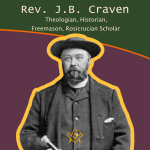 Rev. J.B. Craven: Theologian, Historian, Freemason, And Rosicrucian Scholar Archdeacon James Brown Craven is one of those unsung heroes of Scottish Freemasonry about whom very little has been previously written – here Kenneth Jack explores the life and works of this remarkable esoteric Christian. |
 Discover the powerful family of William Schaw, known as the 'Father of Freemasonry' |
 This month, Kenneth Jack invites us to look at the life of Sir William Peck; - astronomer, Freemason and inventor of the world's first electric car. A truly fascinating life story. |
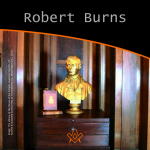 A Tribute to Scotland's Bard – The William Robertson Smith Collection With Burns' Night approaching, we pay tribute to Scotland's most famous Bard – The William Robertson Smith Collection |
 The Joy of Masonic Book Collecting Book purchasing and collecting is a great joy in its own right, but when a little extra something reveals itself on purchase; particularly with regards to older, rarer titles.. |
 Masons, Magus', and Monks of St Giles - who were the Birrell family of Scottish Freemasonry? |
 The 6th Duke of Atholl - Chieftain, Grand Master, and a Memorial to Remember In 1865, why did over 500 Scottish Freemasons climb a hill in Perthshire carrying working tools, corn, oil and wine? Author Kenneth Jack retraces their steps, and reveals all. |
 Charles Mackay: Freemason, Journalist, Writer Kenneth Jack looks at life of Bro Charles Mackay: Freemason, Journalist, Writer, Poet; and Author of ‘Tubal Cain’. |
 A Mother Lodge and a Connection Uncovered, a claim that Sir Robert Moray was the first speculative Freemason to be initiated on English soil. |
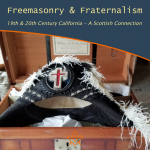 What is it that connects a very old, well-known Crieff family, with a former President of the United States of America? |
 The life of Bro. Cattanach, a theosophist occultist and Scottish Freemason |
 The Mysterious Walled Garden of Edzell Castle Explore the mysterious walled garden steeped in Freemasonry, Rosicrucianism, and Hermeticism. |
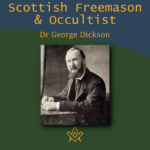 Dr. George Dickson: Scottish Freemason and Occultist Bro. Kenneth explores the life of Dr George Dickson a Scottish Freemason and Occultist |
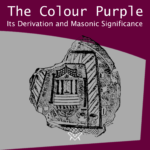 The Colour Purple - Its Derivation and Masonic Significance What is the colour purple with regards to Freemasonry? The colour is certainly significant within the Royal Arch series of degrees being emblematical of Union. |
 Bridging the Mainstream and the Fringe Edward MacBean bridging mainstream Freemasonry with the fringe esoteric branches of Freemasonry |
 Freemasonry in the Works of John Steinbeck We examine Freemasonry in the Works of John Steinbeck |
 Renegade Scottish Freemason - John Crombie Who was John Crombie and why was he a 'renegade'? |
 Scottish Witchcraft And The Third Degree How is Witchcraft connected to the Scottish Third Degree |
masonic knowledge
to be a better citizen of the world
share the square with two brothers

click image to open email app on mobile device


